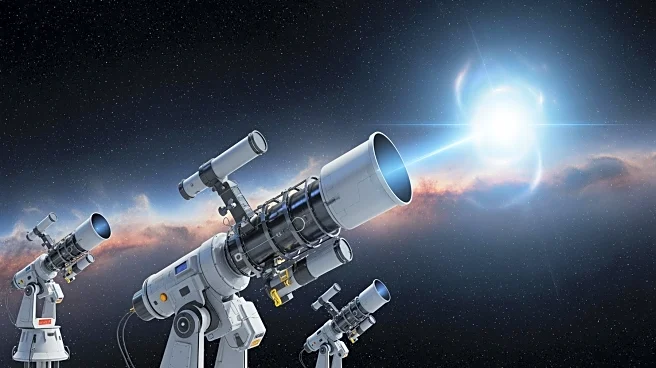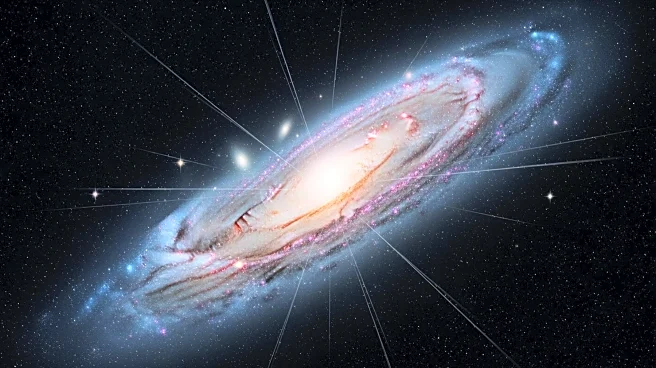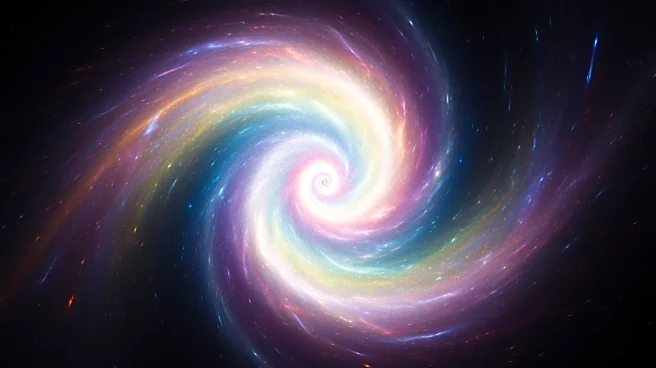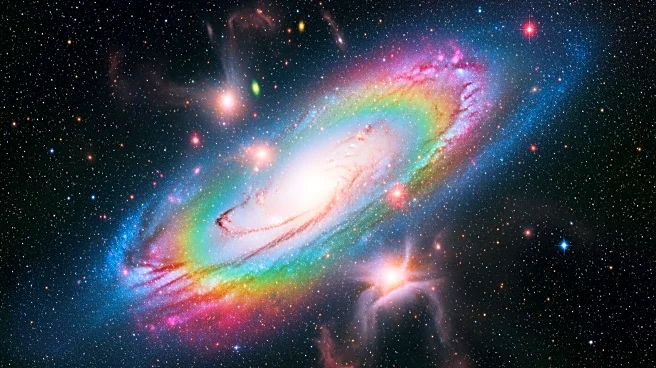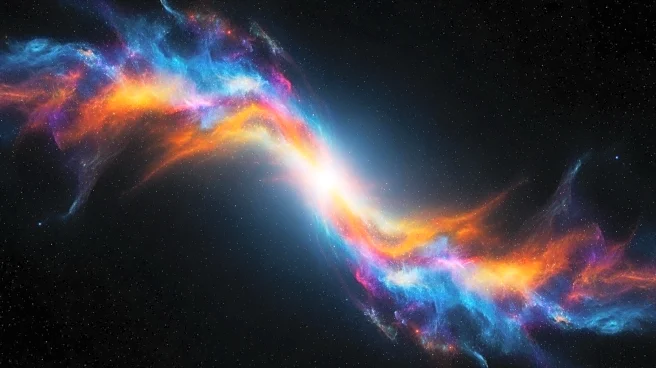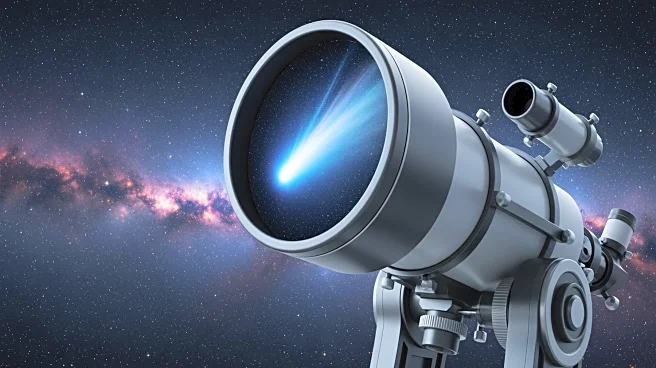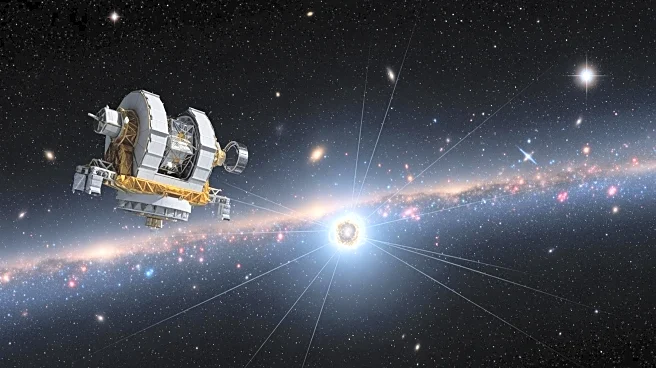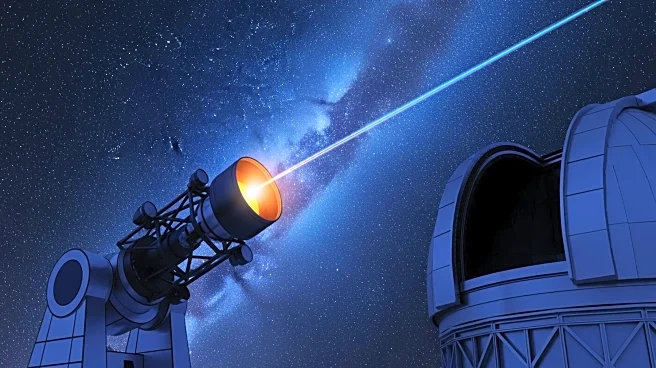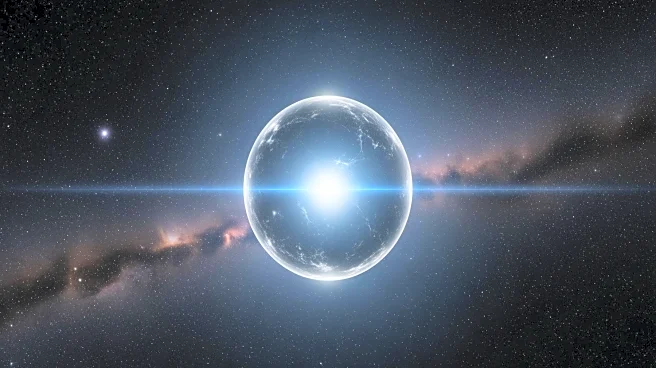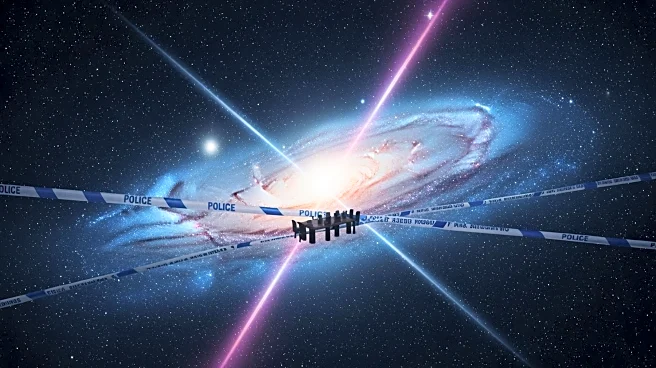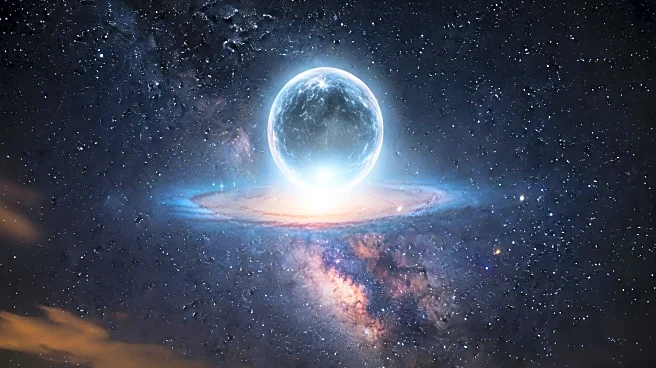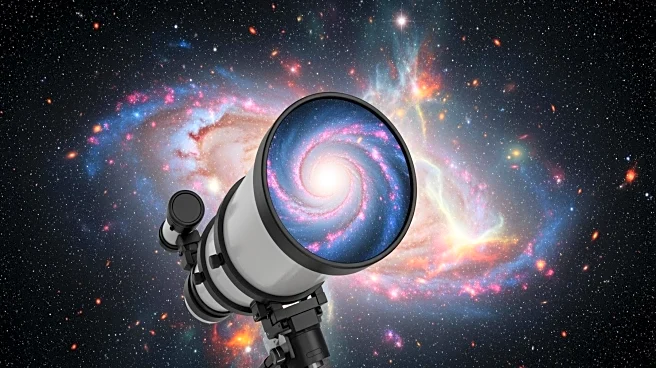What's Happening?
NASA's Fermi Gamma-ray Space Telescope has detected a mysterious, diffuse glow at the center of the Milky Way, emitted by gamma rays. The source of this glow has puzzled scientists since its detection in 2008, with theories suggesting it could be caused
by pulsars or colliding particles of dark matter. Recent simulations using supercomputers have shown that dark matter collisions could create the bulge-shaped glow observed, adding weight to the dark matter theory. The study, published in the journal Physical Review Letters, suggests a 50% chance that the glow might be linked to dark matter.
Why It's Important?
If the gamma ray glow is indeed linked to dark matter, it would represent a groundbreaking discovery in astrophysics. Dark matter is believed to be five times more abundant than regular matter, yet remains elusive and invisible. Confirming its presence would provide critical insights into the fundamental composition of the Universe. The study supports ongoing efforts to detect dark matter, particularly through the search for WIMPs (Weakly Interacting Massive Particles), which are hypothesized to produce gamma rays upon annihilation.
What's Next?
The Cherenkov Telescope Array Observatory (CTAO), under construction in Chile and Spain, is expected to start returning data by 2027. It will detect gamma rays at a higher resolution than Fermi, potentially confirming the link between dark matter and the glow. If successful, this would validate the presence of WIMPs and advance our understanding of dark matter. Alternatively, if CTAO does not find a connection, scientists will need to explore other explanations for the glow.
Beyond the Headlines
The study highlights the challenges in detecting dark matter and the importance of advanced simulations in astrophysics. It underscores the need for continued investment in high-resolution telescopes and detectors to unravel the mysteries of the Universe. The potential discovery of dark matter would not only solve a long-standing puzzle but also reshape our understanding of cosmic structures and their evolution.
